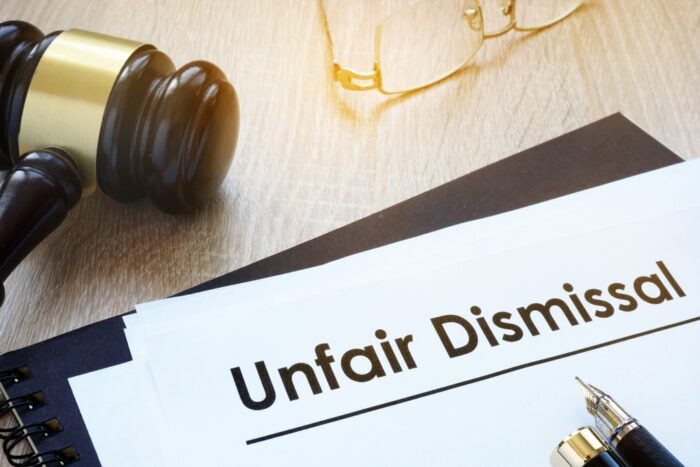
In today’s globalized work environment, the rights of employees have become a focal point of discussion. As businesses grow and adapt to changing economic landscapes, it’s essential for both employers and employees to understand the legalities surrounding workplace termination.
This guide will delve deep into the intricacies of legal termination and unfair dismissal claims, aiming to provide a comprehensive understanding of the topic. As we navigate through this complex terrain, we’ll uncover the importance of workplace rights, the nuances of employment contracts, and the legal boundaries that protect employees from unjust termination.
Understanding Employment At-Will

The term “at-will” employment, while simple at first glance, carries profound implications for both employers and employees. Predominantly a U.S. concept, it means that either party can end the employment relationship at any time, for any reason, unless it’s illegal. This flexibility can be advantageous for businesses needing to adapt quickly to changing circumstances.
However, it also means employees can be let go without a specific cause, leading to potential feelings of job insecurity. While this concept provides employers with flexibility in workforce management, it’s crucial to understand that there are still legal boundaries that protect employees from discriminatory or retaliatory dismissals.
Types of Employment Contracts
The world of employment contracts is vast and varied. These contracts, which serve as the foundation of the employer-employee relationship, come in multiple forms. Permanent contracts offer ongoing employment without a set end date, while fixed-term contracts are designed for specific durations or tasks.
Temporary contracts might be used for seasonal work, and part-time contracts cater to those not working full-time hours. Each type of contract carries its own set of rights, obligations, and termination clauses. For instance, prematurely ending a fixed-term contract might lead to penalties unless there’s a breach of contract by the employee. Understanding these nuances is essential for both parties to ensure a harmonious working relationship.
Legal Grounds for Termination

Termination is one of the most sensitive aspects of the employer-employee relationship. While employers have the right to terminate employees, they must have legitimate reasons. These can range from consistent underperformance, violation of company policies, to more severe issues like workplace misconduct or theft. For example, an employee consistently missing sales targets despite multiple training sessions might be a ground for termination. However, it’s essential for employers to document these reasons meticulously, ensuring a transparent process and safeguarding against potential legal complications.
Unfair Dismissal Defined
Every employee has the right to fair treatment, and this extends to the termination process. Unfair dismissal occurs when an employee is let go without a valid reason or when the proper procedure isn’t followed. It’s a significant distinction from legal termination, which is backed by legitimate reasons. For instance, if an employee is dismissed based on unverified rumors without a proper investigation, it could be deemed as an unfair dismissal, leading to potential legal repercussions for the employer which is best done through unfair dismissal solicitors.
Unlawful Grounds for Dismissal

Beyond unfair dismissals, some grounds for termination are outright illegal. These include discrimination based on protected characteristics like age, gender, race, or religion. Similarly, dismissing someone for whistleblowing, requesting legal leaves such as maternity or medical leave, or participating in union activities is prohibited by law. For example, an employee cannot be dismissed for reporting unsafe working conditions or for participating in a strike. Recognizing these unlawful grounds and understanding one’s rights is essential for employees, while employers must be aware to avoid legal pitfalls.
Understanding Employment Contracts
Employment contracts are the bedrock of the professional relationship between an employer and an employee. They’re not just formal documents but vital tools that outline the rights, duties, and obligations of both parties. A well-drafted contract or breach of contract will specify conditions for termination, benefits, work hours, and other essential aspects of employment. For instance, a clause might state that an employee will receive a month’s notice or pay in lieu of notice upon termination. Both parties must be familiar with the contract’s content to ensure a smooth working relationship.
Employee Rights During Termination

The termination process isn’t just about ending an employment relationship; it’s about ensuring that the rights of the employee are upheld throughout the process. Employees have rights such as receiving a notice, severance pay, or even outplacement support in some cases. In many jurisdictions, if an employee has been with a company for several years, they might be entitled to a longer notice period or a more substantial severance package. Being aware of these rights ensures that employees are treated fairly and receive what they’re due.
Navigating the Termination Process
Termination is more than just ending an employment relationship; it’s a process that requires sensitivity, fairness, and adherence to legal protocols. Employers should provide feedback, offer support, and ensure the process is respectful and transparent. Conducting exit interviews, for instance, can offer closure to the employee and provide valuable feedback to the employer. Following a clear, structured process not only ensures legal compliance but also maintains the dignity and respect of the departing employee.
Filing an Unfair Dismissal Claim

If an employee believes they’ve been unfairly dismissed, they have the right to seek redress. This often involves approaching labor authorities or tribunals. The process can be intricate, requiring the submission of evidence, attending hearings, and potentially leading to compensation or reinstatement for the employee. Documentation, such as employment contracts, performance reviews, and email correspondence, can be pivotal in making a strong case.
The Role of Mediation and Arbitration
Before heading to court, there are alternative dispute resolution methods worth considering. Mediation involves a neutral third party facilitating a resolution between the disputing parties. It’s less formal and can lead to amicable solutions. Arbitration, on the other hand, is more structured, with a third party making a binding decision based on the evidence presented. Both methods can be quicker, less adversarial, and often less expensive than court proceedings.
Seeking Legal Representation

Facing a termination or an unfair dismissal claim can be daunting. Navigating the legal landscape requires expertise, and that’s where employment attorneys come in. Specializing in employment law, they offer guidance, representation, and advice, ensuring that rights are upheld and the process is fair. Whether you’re an employer ensuring you’re following due process or an employee feeling wronged, seeking legal counsel can be invaluable in navigating the complexities of workplace rights.
















